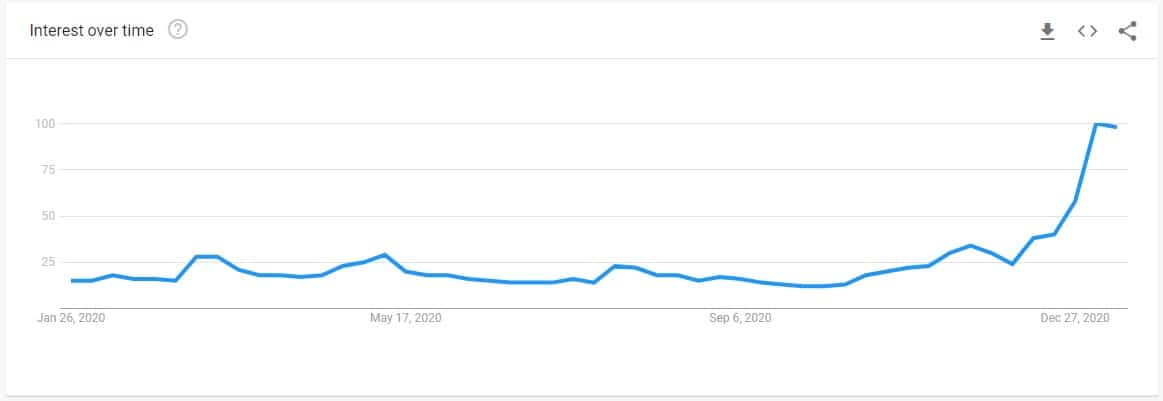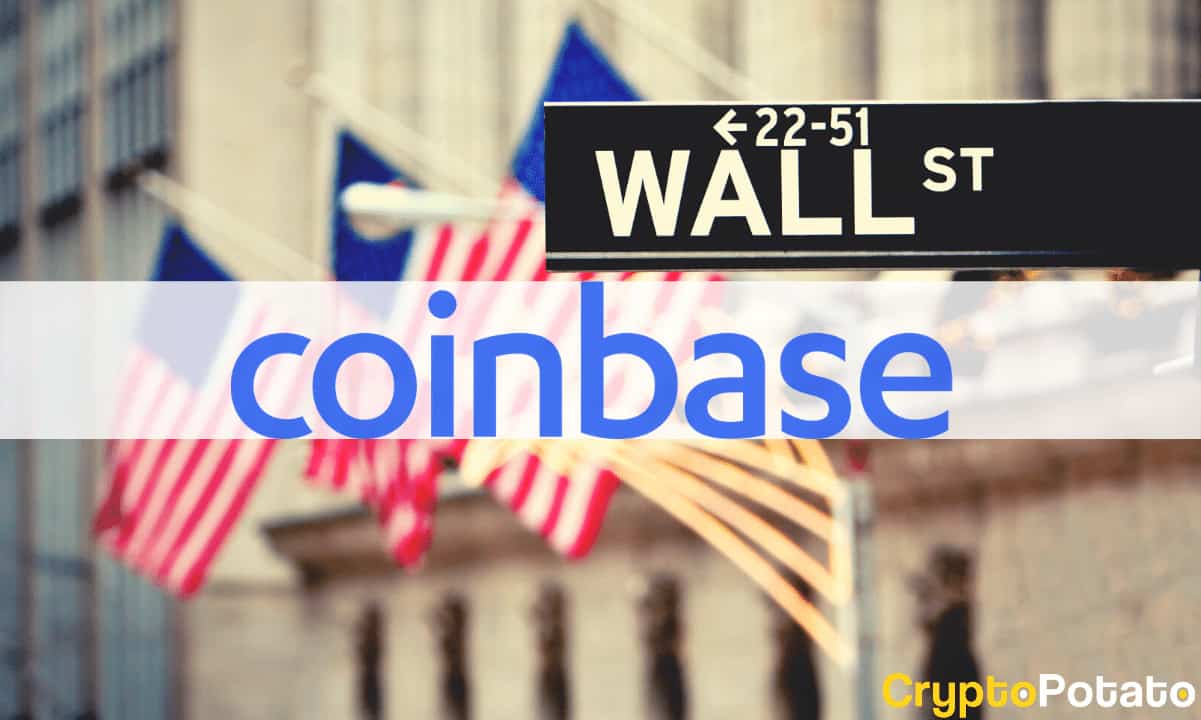Will Bitcoin Price Rally Continue In 2021? 8 Key Considerations
A Fortune magazine story about bitcoin began making the rounds Friday. In it, senior Fortune and Data Sheet writer Aaron Pressman cops to tripling his money in bitcoin– then losing half of it.
It’s a cautionary tale alike for prudent long-term investors in cryptocurrency and day traders who are very smart at getting very stupid with money. The endlessly interesting and complicated question: “Where is bitcoin’s price going next?” is no idle curiosity. It’s a question with a lot of zeroes on it.
Here’s a tweet from an extremely early adopter that aged painfully and humorously as only hindsight this pain can be. It’s from 2011. So he was an absolute lunatic to give up a dime for something that admittedly did look the part of an obvious Internet scam. Bitcoin still looks that way today if you ask GOAT investing heavyweight champions, Messrs, Buffett, and Munger. But in hindsight, kin actually wasn’t crazy enough:
im such an idiot https://t.co/Az8E5QGuJA
— Nick Allen (@NickAllen) January 21, 2021
As dreadful as missing an opportunity like this was, despite being in the right place at the right time (one of the fortunate few who even knew what bitcoin was in 2011), if you really need a good wince, remember the last time bitcoin was this hot, people took out mortgages on their houses to buy BTC in Dec 2017.
Mortgaging Your House to Buy Bitcoin At A Record Price Is A Bold Move
Quoting Joseph Borg, president of the North American Securities Administrators Association, at the time in an interview with CNBC:
“We’ve seen mortgages being taken out to buy bitcoin… People do credit cards, equity lines. This is not something a guy who’s making $100,000 a year, who’s got a mortgage and two kids in college ought to be invested in.”
How to chart a path between these two extremes, to profits without losses?
There are no easy answers. So, run from anyone who seems too sure of anything in such a profoundly novel, extraordinarily complex, and rapidly-accelerating phenomenon as bitcoin.
But here’s a big picture overview of some of the biggest strengths, weaknesses, opportunities, and threats the market is evaluating to price in at the point of exchange today.

Bearish: Four Bitcoin Headwinds
1. Overbought Concerns Send Holders and Traders Profit Taking
Sellers could be forgiven for taking profits or going risk-off in this market. The price for a coin went twice as far into uncharted territory, in under a month, compared to its previous all-time high in Dec 2017. And that was on top of a blistering 3-month rally. Bitcoin’s price chart went parabolic from the $10,000 handle just last September, back to $20,000 a coin by December for the second time ever.
It was the first time a whole coin fetched that much greenback fiat at the market since “Rockstar” was bumping the #1 spot on the Billboards. The most crowded trade of the last month, long bitcoin could easily be well overbought at the moment. It was more popular with hedge fund managers in January than FAANGMT.
2. The Double Spend Panic Driving Risk-Off Trades
Adding to overheated price worries this week, there was a rumor that a mining pool double-spent USD $21. The rumor started on Wednesday when BitMEX Research spotted an RBF transaction on the chain. Replace-by-fee transactions are a normal part of the blockchain. In fact, they’re an intentional feature of bitcoin architecture. It allows key holders to resend a transaction that hasn’t yet been confirmed but with a higher mining fee. That way, senders can entice miners to validate and confirm an order and add it to the blockchain if the original fee was too low to get picked up.
San Francisco Open Source Cloud architect Gaurav Agarwal says developers proposed RBF in BIP125. They implemented it in Bitcoin Core 0.12.0 in 2016. The blockchain scaling wizards at Bitcoin Optech have a copy of the primary source code and documentation here.
Unfortunately, a suggestion that there was a double-spend became a viral rumor that sent bitcoin’s price into a tailspin Thursday. The total market cap gave up some $81 billion to the ensuing FUD. That’s because bitcoin is specifically designed to prevent double-spending using rules and incentives without trusted third parties. The sheer speed and scale of lost capitalization revealed just how many new entrants there are in the market presently. There was a lot of froth in the bitcoin price Thursday morning, and all the rumor mill had to do was blow to send it flying.
3. Threat Rich Regulatory Environment
As the United States moves forward with its transition to the Biden Administration, regulatory uncertainty looms ahead for cryptocurrencies. The Trump Administration was openly hostile to bitcoin and cryptocurrency after remaining largely quiet about the fintech industry until 2019. Then in July of that year, the president broke his silence on crypto to say he’s “not a fan.” Trump mentioned Bitcoin and Facebook’s Libra project by name. He also associated them with illegal activity like the illicit drug trade.
President Joe Biden nominated Janet Yellen to head the US Treasury Dept in November. The former Fed chair has been a critic of open source finance. Industry fears of stifling regulation mounted when Yellen repeated the Trump Administration’s line on crypto during her Senate confirmation hearing this week. But within hours, in a written addendum to her answers, she moderated her position.
Meanwhile, Biden ordered a regulatory freeze on all new proposals until his administration has had a chance to review them. That includes a proposal by Yellen’s predecessor at the Treasury Department to regulate self-hosted crypto wallets. Bitcoin users are waiting to see what Biden will do. And markets abhor uncertainty.
4. Bitcoin Safe Haven / Non-Correlation Thesis in Question
Perhaps the biggest tailwind facing bitcoin’s price at the moment is the still open question of correlation. Is bitcoin a correlated asset, one that rises and falls with other securities like stocks, bonds, and commodities? Or a non-correlated asset, and therefore a valuable hedge to diversify investment portfolios? That’s the role gold plays in money managers’ portfolios to hedge against inflation and stock market capitulations. Bitcoin’s market movements weren’t correlated to other asset classes for most of 2019. Neither directly nor inversely. But during last March’s worldwide asset valuation collapse, the coin fell precipitously like everything else. That dealt a major blow to the non-correlation thesis, a doubt that persists today.

Bullish: Four Bitcoin Tailwinds
1. A Tsunami of Institutional Investment The Last Two Quarters
“Grayscale saw its assets under management skyrocket as Wall Street used it as a proxy to invest in bitcoin. The New York-based investment firm kicked off last year with $2 billion in assets and ended with more than $20.2 billion. That 900% increase was driven by demand from institutional investors such as hedge funds, endowments and pension funds, the company said in a quarterly report Thursday.” –CNBC, Jan 14, 2021
Despite the headwinds for bitcoin, hedge funds are pouring capital into the market. In the never-ending chase for yield, managers had to look outside of stocks and bonds as the year turned over. The NASDAQ Composite melt-up, capping off an extraordinary year of weekly record levels, has priced out any hope of outstanding ROI at this point of entry.
Corporate multiples (the relation between the stock price and underlying fundamentals like earnings) are at historic extremes. With equities fetching eye-popping prices, they’re now higher than the entire last decade that Warren Buffett passed over, with stock prices too rich for his bargain loving blood. Tesla’s (NASDAQ:TSLA) price to earnings ratio currently soars at a staggering 1,618.
That’s because investors like TSLA bull Chamath Palihapitiya expect stellar growth. But bear in mind, according to Investopedia, “the average P/E for the S&P 500 has historically ranged from 13 to 15.” This brave new world of valuations completely decoupled from corporate fundamentals led a Zacks commentator for Yahoo Finance to ask this week if P/E ratios even matter anymore.
Meanwhile, even as bond yields got a bump out of Joe Biden’s election victory, they’re just barely waking up from abysmally historic lows at an unprecedented scale for the better part of 2020. And as Crescat Capital’s Otavio Costa notes, the 5-year inflation-adjusted real yield for fixed income securities is verging on an all-time low.
2. A Star-Studded Wave of Celebrities Jumping on Satoshi’s Bandwagon
Meanwhile, the retail crowd is getting more hip to bitcoin and the cryptocurrency industry than ever. Google search volume for “bitcoin” is currently some 10x its Sept 2020 level.

A star-studded wave of celebrity endorsements is driving awareness of bitcoin and crypto to a global audience of adoring fans. Social media channels at scale are amplifying their signal, hastening adoption in a way that was impossible just years ago. Last May, for example, J. K. Rowling made a big splash when she asked someone to explain bitcoin to her. Elon Musk chimed in to answer among other bitcoin and crypto enthusiasts.
Just this week, Rick and Morty creator Justin Roiland has combined art and finance to spectacular effect. He managed to auction artworks for a total of 1,300 ETH, worth some USD $1.6 million at market at the time.
The best I could do. Testing the boundaries of crypto art. What makes something valuable? The art? The artist? The process? The state of mind while created? The intention of the piece? Feeling really good about this collection. $NFT #NFT https://t.co/xeQhw0o5Vv
— Justin Roiland (@JustinRoiland) January 19, 2021
Roiland was late to the game. In August, Paris Hilton auctioned a drawing of a cat for over USD $16,000 in ETH. Ashton Kutcher joined the fray of Ethereum art auctions the same month. Earlier this month, Lindsay Lohan of “Mean Girls” and “The Parent Trap” fame predicted bitcoin’s price will appreciate to $100,000 USD.
That’s not as surprising as it may sound. In 2011, Lohan tweeted that the US dollar “will soon be worthless if the Fed keeps printing money!” In November, Maisie Williams, who played Arya Stark on HBO’s “Game of Thrones,” asked followers on Twitter if she should “go long on bitcoin?” Last month, the Carolina Panther’s Russell Okung said he is now the first NFL player to be paid by the league in bitcoin.
A year earlier, he tweeted, “Pay me in bitcoin.”
3. Neckbreak USD Monetary Expansion by The Federal Reserve in 2020
As investor extraordinaire Warren Buffett said about interests rates in a Feb 2016 interview with CNBC:
“Interest rates are like gravity in valuation. If interest rates are nothing, values can be almost infinite. If interest rates are extremely high, that’s a huge gravitational pull on value – and we had that in the early 1980s… Berkshire Hathaway is sitting with billions of dollars of euros in an insurance company that we have in Europe, and they will bear a negative rate.”
Mr. Buffett added with his characteristic sense of humor:
“We would be better off if we had a big mattress in Europe that we just stuck all of this stuff in it – if only I could just find the person whom I trusted to sleep on the mattress!
Who needs cheese when you have #Bitcoin. Rats are stacking sats at Berkshire Rat-away. Thanks be to our dear founder Ratoshi Nakamoto 🧀🐀🎉 pic.twitter.com/QVzZLv1z1z
— Tyler Winklevoss (@tyler) January 23, 2021
That’s why bitcoin investors have had trouble grappling with the Oracle of Omaha’s extreme disdain for bitcoin and cryptocurrencies. The lion’s share agrees with his understanding of the role interest rates and the money supply play in valuations. That fundamental macro concern with finding shelter from central bank money devaluation is perhaps bitcoin’s biggest selling point.
Assets denominated in central bank currencies are inflationary by design. Bitcoin, with its limited supply, and a fixed rate of issuance, which diminishes by half every four years, is intensely deflationary by design. It’s no wonder that the unprecedented monetary expansion to whip deflation last year sent bitcoin on a moonshot twice as high as the last one in 2017.
4. Strong Fundamentals: Bitcoin Hashrate, New Addresses
At the height of the bitcoin bubble in 2017, Bleakley Advisory Group chief investment officer Peter Boockvar called bitcoin a “gigantic price chase based on nothing.” That bitcoin is “based on nothing” is a common refrain of cryptocurrency critics. But bitcoin is not based on nothing.
It’s based on the great pains and expense of some 10,000 full nodes around the world, taken to secure, maintain, and update a completely transparent, public ledger of accounts. Bitcoin is a software as a service, and the service is fast, accurate, low-fee accounting, available to anyone with a computer and access to the Internet.
That’s the business model, and the underlying fundamentals reveal much about how bitcoin is doing in Jan 2021. Not as against other asset classes or the global macro-financial outlook, but in microeconomic terms– those of a business and the people who demand and provide its services.
Even as bitcoin’s price fell around 16% from Jan 8 – Jan 12, its fundamentals held stronger than ever. Bitcoin’s mining difficulty revealed a record amount of global computing power working to maintain bitcoin during the rout.
The rush to mine bitcoin (maintain the books for its users) continued to gather pace through this week’s panic. On the demand side, Glassnode data revealed the number of active addresses on the blockchain rising to an all-time high on Jan 8. That was a Friday. By Monday, Jan 11, bitcoin trading volume on exchanges passed its previous all-time high, according to data gathered by CryptoCompare.









